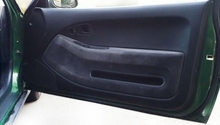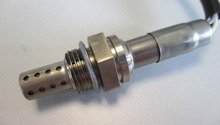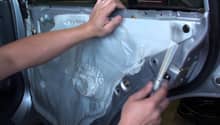Honda Civic: Engine Harness Connectors and Plugs
One of the most important components of an engine is the main wire harness. It routes all the electrical power required for each component and connects them with plugs. This article explains some common problems with wire harnesses and how to properly diagnose and repair them.
This article applies to the Honda Civic/Del Sol (1992-2000).
Each plug for each wire harness has one job – to remain securely connected. When these pieces fail, the electrical current will not reach the proper components, which results in ignition, idling, and driveability issues. A damaged harness is hard to diagnose and can have most backyard mechanics scratching their heads as they continuously replace fine working components, never figuring out how to repair the problem. This article breaks down the different wire harness components in your Civic, what they do, and how you should go about repairing them.
Component Breakdown
Wire Harness
The main engine harness is a series of wires that connects all of the motor's electrical components. There are several wires, all of which are bundled together in a wire loom and electrical tape. Specific areas, such as the fuel injector clips, have plastic pieces that properly route the wires to its proper location. The alternator wire also has a plastic tube that routes the wire's power over the valve cover.
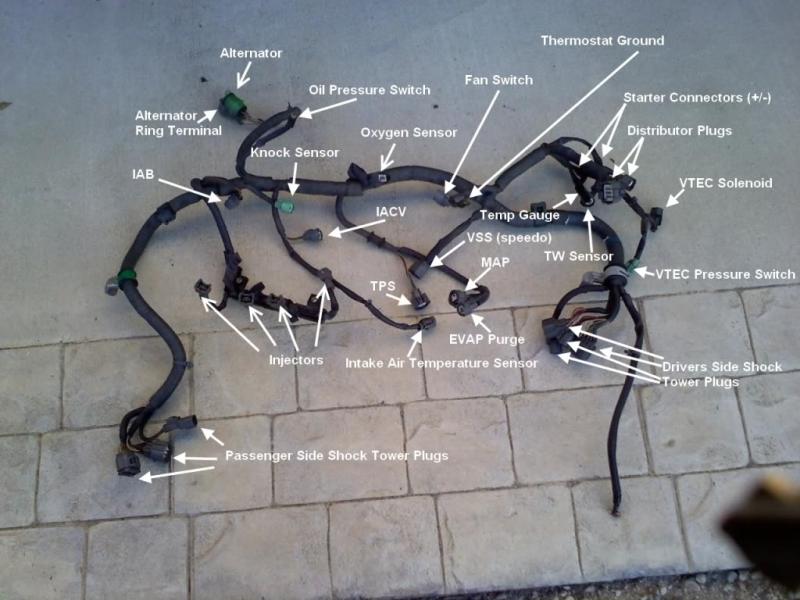
Wire Harness Connectors
Plugs provide a secure connection between wire harnesses as well as for electrical components and sensors. They allow power and signals to diffuse across the entire vehicle just as easily as they can cut power and signals. Over time, a plug may develop a broken clip and result in a loose connection, thus mimicking a component that has failed. To diagnose a bad plug, you must use a test light or multimeter to ensure there is still continuity.
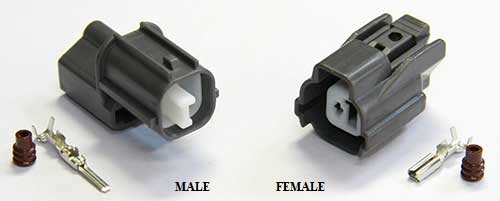
Figure 2. Plug used for the reverse switch. 
Figure 3. Four-wire O2 sensor plug that connects to the exhaust system.
Engine Plugs
These plugs, sensors, and switches are found around the entire engine and are necessary for engines to run efficiently. Each wire harness and plug sends power to its corresponding components of the engine. Over time, these plugs can crack as well, resulting in loose connections and causing a slew of different issues in the engine. To repair a broken plug, simply remove it from the component. Some plugs, however, can not be removed. A pick-up coil for a distributor, for example, requires the whole housing to be replaced. Whichever plug is faulty, replace it as soon as possible to avoid more costly and severe damages.
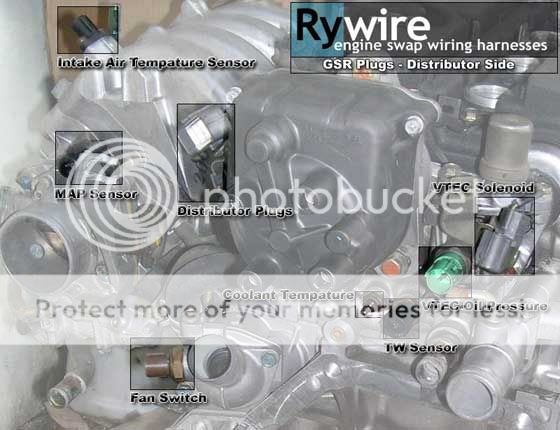
Scheduled Maintenance
There isn't a maintenance interval for checking wire harnesses. However, the plugs can be inspected for any frayed connections, corrosion, or cut sleeves. These types of issues generally occur during user error or after several years.
Common Questions
Do I need to swap wire harnesses along with new engines?
Each engine uses a specific ECU and engine wire harnesses. If you're swapping engines, the harness should also be changed as they can include new sensors and/or may have switched sensor locations.
What causes a wire to burn?
There are a few causes that may cause a short in a car's engine wire harness. Any additional accessories that are not properly wired in place or exposed wiring that crosses against each other may cause a wire harness to burn. Also, user errors, such as accidentally crossing the connections of a battery, can also cause the wire harness to melt.
Common Issues
Broken Plugs
A broken wire harness plug is fixed with a simple replacement. Cut out the old plug, strip the wires, solder them to the new connector, and heat-shrink the connection.
(Related Discussion: Honda Electrical Connectors - Honda-Tech.com)
Burnt, Open, or Shorted Wires
Any burnt, open, or shorted wires are generally more difficult to diagnose, as the main components are usually the first suspects. So, check the wires before replacing any electrical components. Once the wire or wires are found, the length of the damage should be determined and fixed. Although it may be easier to replace the burned wiring, it may be just as easy to run a new wire into the harness.
(Related Discussion: Burnt Alternator Ground - Honda-Tech.com)
Honda Civic 1996-1999: Technical Service Bulletin (TSB)
99-029 04-29-99: Malfunction Indicator light is on with blown fuse #15; Causes O2 and vehicle speed sensor (VSS) issues and dimming lights.
Related Discussion and Site
- Engine Harness Plug/Connection Identification - Honda-Tech.com
- Diagnose Car Electrical Problems by Chasing Voltage Drops - PopularMechanics.com



